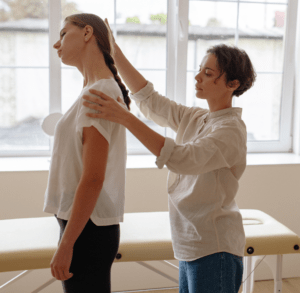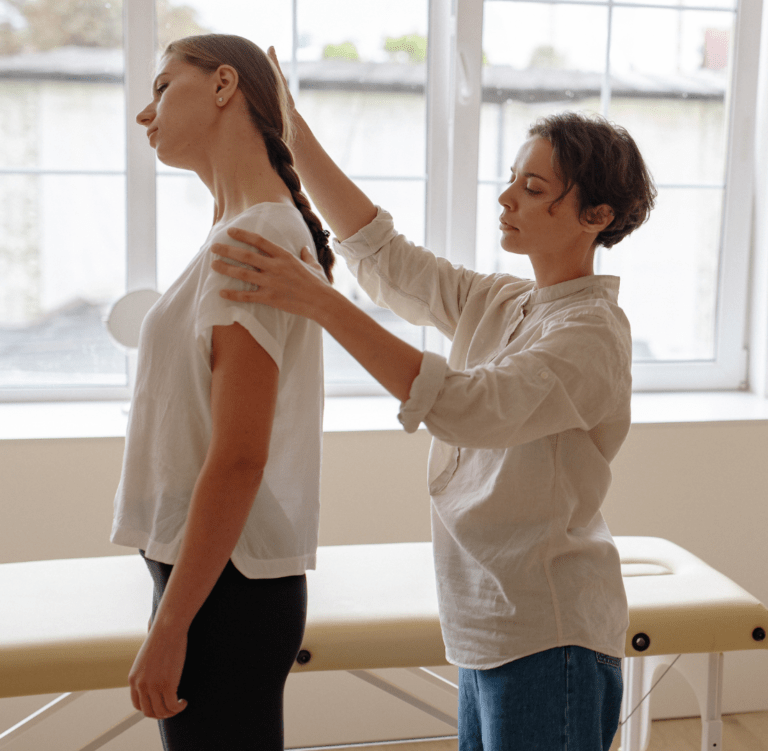06 Hallmarks of a Well-done physical therapy
Well-done physical therapy is physical therapy that meets the expectations and needs of the individual. It is important to understand that it is more than just giving someone a treatment once, and then wondering why they haven’t improved with time.
The term “well done” has a lot of connotations. You may have heard people say “that’s done well,” or maybe even “I’ve got to find a way to pay them a well-done tip.” In the business world, a well-done job can be defined as one that gets the job done right and exactly how it should be done. Similarly, in physical therapy, Therapists strive for every patient to have a successful visit with them where there are no issues or delays lost in translation. The goal is for you to walk out of their office feeling more like yourself — mentally and physically — than when you entered.
How do Physical Therapists help you out?
The therapist will ask about your pain, your activities, your health, and other issues that may be contributing to your symptoms. He or she will also evaluate any past injuries or surgeries you have had, and determine how they relate to the current condition.
Physical therapists can help with a variety of conditions including:
- Back pain
- Leg pain
- Shoulder pain
- Stroke recovery
- Injury rehabilitation
- Sports medicine
In addition to treating patients, physical therapists also help educate people about their condition so they can make informed decisions about treatment options. They also provide advice on how to prevent further injury from occurring, which is important because physical therapy isn’t meant to be a one-way street where patients just sit and wait for their condition to improve — it’s a process that should be ongoing.
Hallmarks of a Well-done Physical Therapy
01. It’s personalized.
Well-done physical therapy should be personalized. The therapist will work with you to determine what your goals are, and then create a treatment plan that will help you reach those goals.
The therapist will also work closely with your physician to review your medical history and make sure that any medications you’re taking won’t interfere with the healing process.
This is why it’s important to have a thorough consultation before starting physical therapy — not only because it will give you a better idea of what to expect from the sessions, but also because it can help prevent any problems or complications that could arise during treatment.
02. It doesn’t just address symptoms, but also the cause of them.
A physical therapist is a health professional who uses their knowledge of anatomy and physiology to aid in the treatment of patients. They help patients recover from injury, illness, or disease by performing a series of treatments that include stretching, strengthening, and modifying joint movements.
The purpose of physical therapy is to improve your function, not just your symptoms. Well-done physical therapy can address the cause of your pain so you can maintain or regain your independence.
03. Well-done physical therapy is hands-on.

Physical therapy is a hands-on process. It involves the use of manual techniques, such as massage and stretching, to relieve pain and restore motion. Physical therapists also use heat, cold packs, electrical stimulation, and other treatments to improve your overall health.
Physical therapists may work with patients from the comfort of their own offices or from home if they’re unable to travel. They can also recommend more specialized treatments at local medical centers or clinics.
04. You can’t do it all by yourself.
A lot of people think that physical therapy is a simple process of moving around and doing exercises. However, the reality is that it’s not as easy as it seems. There are several things that you have to consider before starting your treatment.
For example, do you have the right equipment? If not, then you might need to go out and buy some equipment that will help you achieve your goals faster. It is also important to know what type of exercise is best for your condition. If you have an injury or have been diagnosed with a disease, then it’s best to seek professional advice before starting any kind of physical therapy program.
You can’t do it all by yourself. You need someone who knows what they’re doing in order to help you get back on track with your health goals. Your doctor should be able to recommend a qualified therapist who understands how medicine works and how physical therapy can help treat various medical conditions such as injuries, arthritis, and even mental health disorders like depression or anxiety attacks.
05. You have a plan for when therapy ends.
When you have a plan for when therapy ends, it is much easier to stay on track and do what is needed. From the very beginning of the process, your therapist will be able to help you set goals and know when it is time to increase or decrease your physical activity level.
If you are not sure about your progress, ask for a re-evaluation during regular visits to the therapist’s office. Whatever the reason for continuing physical therapy, it’s important that you have a plan before ending your sessions. The following steps should be taken:
- Decide on the next step in your overall treatment program. This could be after one session or several sessions later down the road.
- Try not to jump ahead too soon in this process, though; don’t try something new unless it makes sense for you and your condition (if it doesn’t make sense at all, then don’t do it).
- Schedule an appointment with your doctor or therapist so that they can review what has been done so far and give advice on how best to proceed from here on out (for example, how long should I wait before starting another treatment?).
- Also, discuss any problems that have arisen during treatment (such as pain or other symptoms).
06. You have a Suited Physical therapist according to your needs
It’s important when looking for a physical therapist that you find someone who understands your condition and can help you manage it on a daily basis. Your PT should also have experience with similar conditions.
Many patients start seeing their first physical therapist as soon as they are released from the hospital, but it’s important to schedule an appointment with your new PT at a time when you can both be present at the same location. This allows your doctor to answer any questions you may have about your condition and treatment plan, while also giving your new specialist time to get familiar with your case history.
You may be able to talk with your doctor about what types of exercises or treatments they would like their patients to do at home. If this is the case, make sure that you ask how often these visits take place and what type of equipment will be used during these sessions. Be sure that any equipment needed for treatment is available at home so that it does not have to be shipped back and forth between offices or hospitals in order for it to be used during appointments.
Outcomes of a Well-done Physical therapy
Well-done physical therapy can lead to improvements in mobility, strength, and flexibility. The outcomes of physical therapy are individualized for each patient. The physical therapist will assess the goals and objectives of the patient, and then develop a plan that is best suited to the needs of that individual. The goals may be short-term or long-term and include treatment for pain, activity modification, strengthening, and/or improving function. Well-done physical therapy may also help you:
- Increase your ability to participate in daily activities
- Improve your quality of life
- Prevent or manage future injuries and pain
- Reduce your dependency on others for assistance
- Improve your self-confidence
- Activity modification (such as exercise programs or weight loss programs)
- Stabilization exercises (such as reducing spasms in the back or improving balance)
- Strengthening exercises (such as building arm strength after an injury)
- Functional ability improvement (such as increasing hand flexibility after an injury
However in an unfortunate scenario if you do not get the desired outcome from physical therapy, here’s a guide to what if physical therapy doesn’t work. It will help you figure out an alternative plan.
Conclusion
Physical therapy is about more than the time you spend doing it in the office; it’s about how you manage your condition at home and how well you communicate with your PT. Well-done physical therapy depends on how often a treatment session is administered, how long it lasts, whether or not the patient receives help from a therapist during that therapy session, what type of treatment it consists of, and how well the therapist interacts with the patient, so make sure to be very careful while using a physical therapist for you. Choosing a PT is a make-or-break moment in your therapy.






